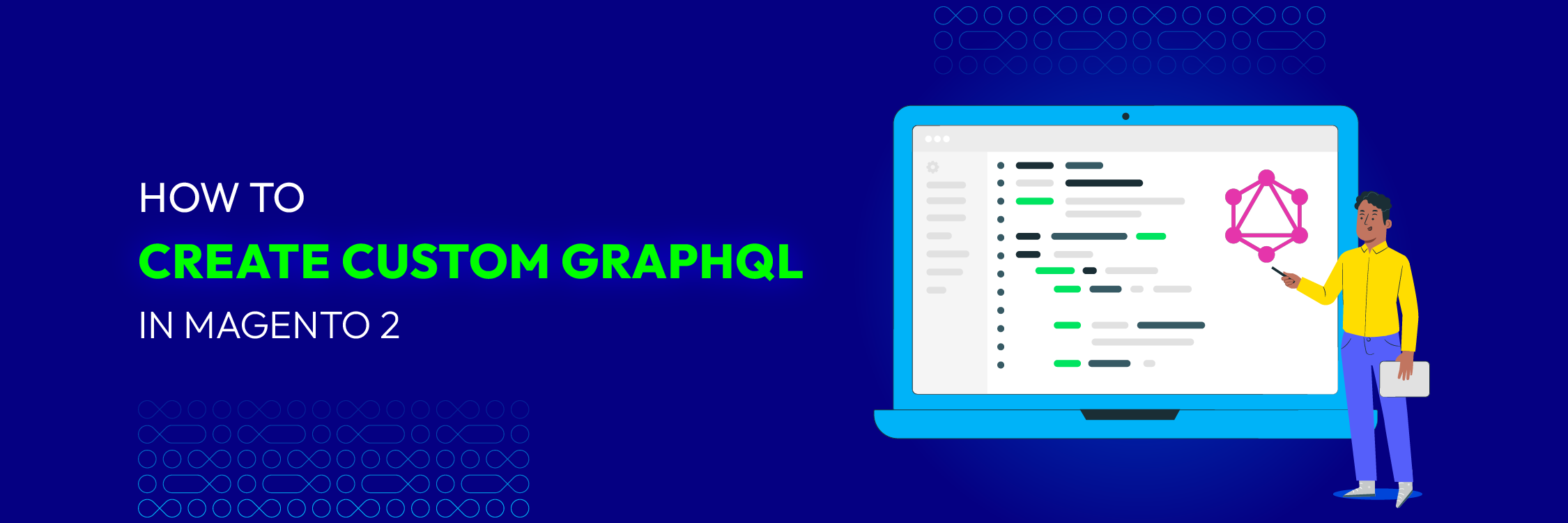How to Create Custom GraphQL in Magento 2

Are you looking for an easy way to create custom GraphQL for your Magento 2 store? Have you been trying many methods but none actually worked? If so, you’re in the right place.
In this blog, we will cover the basic overview of GraphQL and guide you to create it Magento 2 with step-by-step instructions. Let’s get started!
What is GraphQL?
GraphQL (a query language for APIs) allows users to request the necessary data only. Experts prefer this method more than the traditional REST APIs because of its advanced efficiency and versatility. With GraphQL, you can define the response structure to reduce under-fetching or over-fetching of data.
Why Choose GraphQL in Magento 2?
Magento 2 offers native support for GraphQL, which makes it an appealing option for developers.
- Flexibility: Modify data retrieval to meet your application’s individual needs.
- Efficiency: Fetch just the info required to improve performance.
- Scalability: Expand and adjust your APIs along with your business growth.
Creating Custom GraphQL Queries in Magento 2
Let’s break it down step by step!
Step 1: Define the Schema
Create a schema.graphqls file and define the custom types, queries, and mutations.
# File: Vendor/Module/etc/schema.graphqls
type Query {
customData: CustomDataType @resolver(class: "Vendor\\Module\\Model\\Resolver\\CustomData") @doc(description: "Retrieve custom data")
}
type CustomDataType {
id: Int!
name: String!
# Add more fields as needed
}
# Add mutation types if needed
Step 2: Create a Module
Next, you need to create a custom module and it must follow Magento 2’s module structure. Ensure to include essential files such as registration.php, etc/module.xml, and so on.
Step 3: Register the Schema
Then, register the GraphQL schema in module’s etc/schema.graphqls file.
# File: Vendor/Module/etc/schema.graphqls
schema {
query: Query
mutation: Mutation
}
Step 4: Define Resolvers
Generate resolver classes in the module to fetch data for custom queries and mutations.
// File: Vendor/Module/Model/Resolver/CustomData.php
namespace Vendor\Module\Model\Resolver;
use Magento\Framework\GraphQl\Query\ResolverInterface;
class CustomData implements ResolverInterface
{
public function resolve(\Magento\Framework\GraphQl\Config\Element\Field $field, $context, \Magento\Framework\GraphQl\Schema\Type\ResolveInfo $info, array $value = null, array $args = null)
{
// Fetch and return custom data
return [
'id' => 1,
'name' => 'Custom Data',
// Add more data as needed
];
}
}
Step 5: Implement the Endpoint
Create a controller is the fifth step. It is used to take care of GraphQL requests as well as route them to your schema.
Step 6: Test Your Endpoint
Finally, let’s check the result by testing your custom GraphQL endpoint through GraphiQL or Postman.
FAQs
1. Can I use custom GraphQL queries and mutations to optimize my store’s performance?
Of course! By constraining your data queries to what is necessary, you may greatly enhance your store’s speed and minimize server pressure.
2. Are there any security considerations when creating custom GraphQL endpoints?
Security is super important. It is recommended to always check and clean user input. Consider using authentication and permission policies to safeguard your GraphQL APIs.
3. How do I handle errors in custom GraphQL queries and mutations?
Apply error handling in your resolvers to deliver informative error messages and gently deal with unusual cases.
4. Can I use third-party GraphQL tools and libraries with Magento 2?
Absolutely. You could use third-party tools and libraries to improve the experience of your GraphQL development in Magento 2. Popular choices are GraphQL Yoga and Apollo Client.
Wrap-up
In short, custom GraphQL gives you great power to optimize your Magento 2 store’s performance as well as bring satisfied experiences to shoppers. Just follow our step-by-step instructions and you will be able to create custom GraphQL endpoints and prevent unnecessary security issues. If you have any questions, please feel free to contact us.






![Top 20+ Must-have Shopify Apps for 2025 [Free & Paid] - Mageplaza](https://cdn2.mageplaza.com/media/blog/must-have-shopify-apps/top-must-have-shopify-apps.png)
![[2025 Updates] Top 10+ Upsell Apps for Shopify - Mageplaza](https://cdn2.mageplaza.com/media/blog/best-upsell-shopify-app/cover.png)